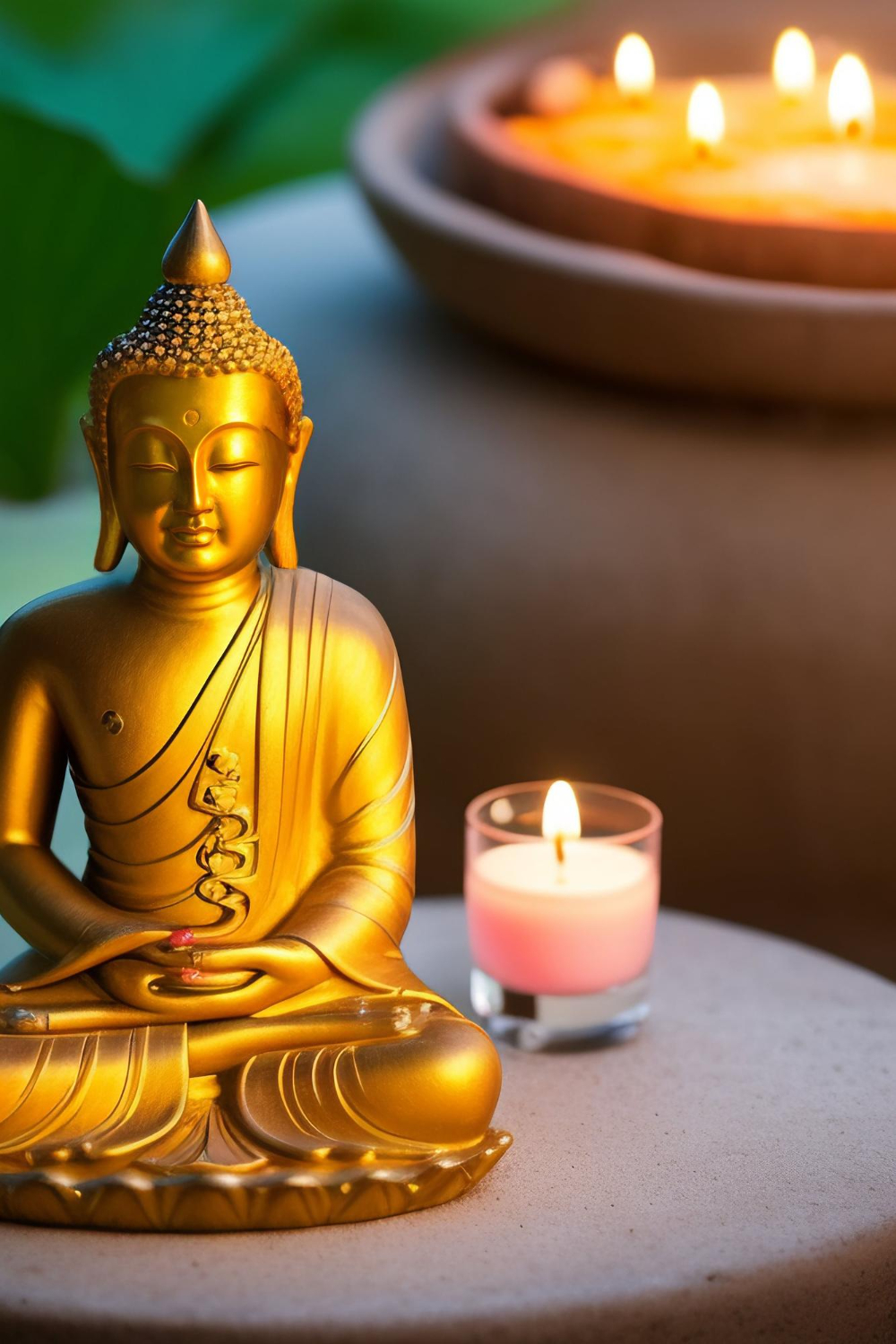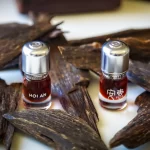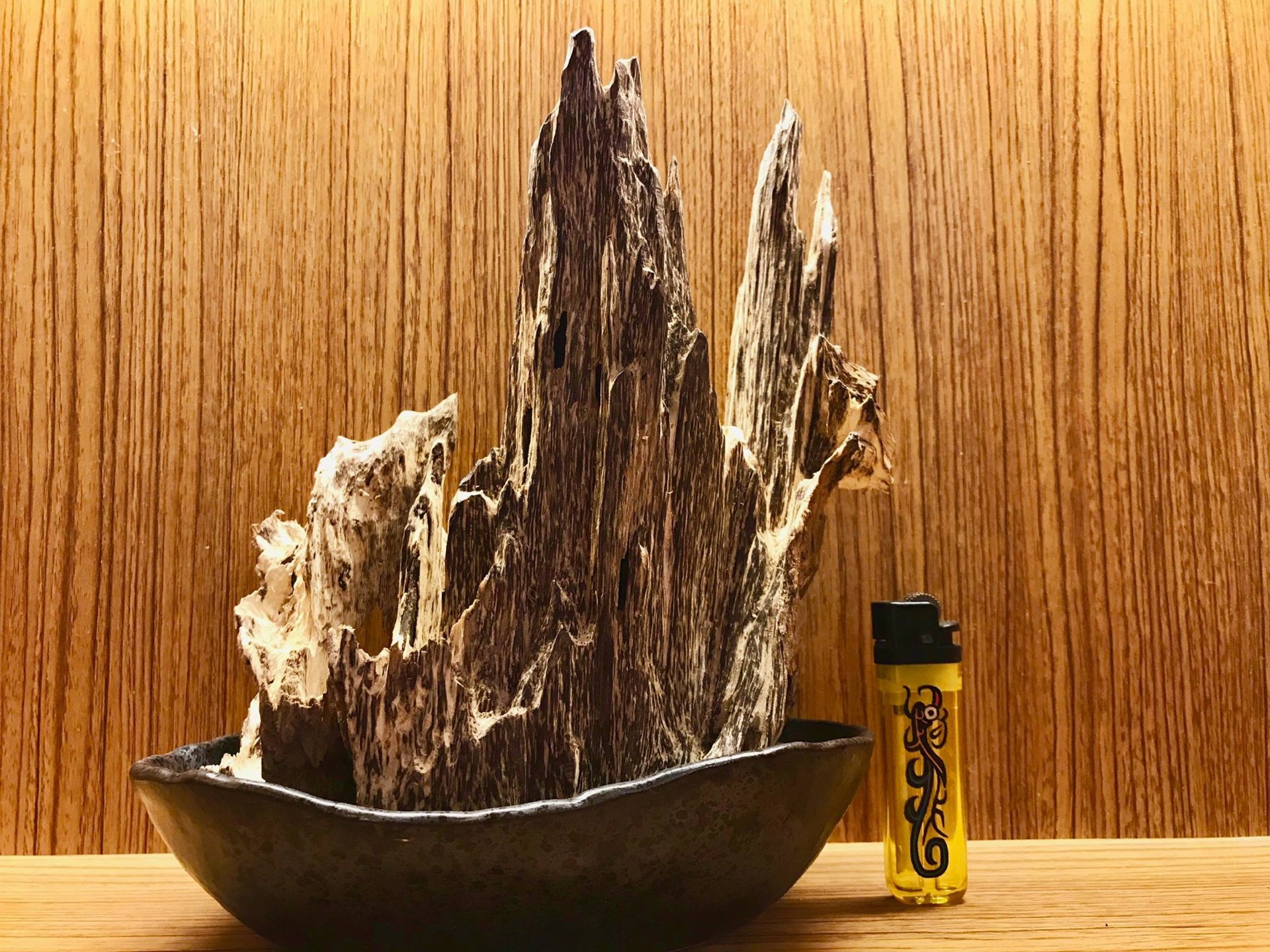Agarwood in Buddhism – Irreplaceable Values
Among the countless fragrances in the world, very few are as prominently featured in religious texts and stories as agarwood. Key texts in Mahayana Buddhism such as the Mahāvaipulya Buddha Avataṃsaka Sūtra, the Birth Stories (Jataka tales) which chronicle the previous lives of the Buddha Siddhartha Gautama, the canonical scriptures of Theravāda Buddhism like the Vimānavatthu, the Lotus Sutra, and numerous other valuable scriptures all emphasize the significance of agarwood in the Buddhist doctrine and culture. Agarwood is renowned as the most revered fragrance to offer to the Buddha, the aroma of Nirvana.

Agarwood – The Fragrance of the Divine Realm
Agarwood is created through the miraculous process of accumulation and resin formation in the wounded heartwood of the Aquilaria tree, absorbing the essence of heaven and earth over hundreds and thousands of years. When agarwood is burned, its sweet woody scent fills the air, exuding an enigmatic forest aroma, the warmth of sunshine and wind, and the lingering fragrance of months and years. This scent engulfs individuals, immersing them in a tranquil and serene atmosphere.

As a result of its unique qualities, agarwood has been used by Buddhist monks and practitioners since ancient times during meditation, recitation of scriptures, and significant religious ceremonies. Agarwood is venerated as a celestial fragrance due to its exceptional rarity, its sacred and pure character, and its power to cleanse and calm the mind, facilitating meditative states.
In the Lotus Sutra (Chapter 19: The Merits of the Preacher of Dharma), it is written: ‘Those who uphold the Lotus Sutra, despite dwelling here on Earth, will also be able to discern fragrances in the heavens above. The scents of parijataka and kovidara trees, mandarava flower, great mandarava flower, manjushaka flower, great manjushaka flower, sandalwood, aloe, and various kinds of powdered incense and blended incense made of an array of celestial flowers – they will be able to discern all these without fail.’
Among these fragrances, ‘aloe’ refers to agarwood – the ‘celestial fragrance.’
The Significance of the 108 Bead Agarwood Rosary in Buddhism
In the Maha-parinibbana Sutta, an ancient Buddhist text, it is traditionally narrated that during his final journey, the Buddha instructed King Ajātasattu of Rājagṛha to cultivate good merit by reciting the Triple Gem (the Buddha, the Dharma, and the Sangha) using a 108-bead rosary. This rosary was to be carried at all times to maintain focus and mental purity. Each recitation was to be counted using one bead, progressing from one to ten, twenty, one hundred, one thousand, or even a hundred thousand repetitions. After completing one hundred thousand recitations, the individual would overcome a hundred and eight impediments, which was considered a significant step towards liberation from the cycle of birth and death.

Buddhist rosaries, including those made from agarwood, are usually created from precious woods, with agarwood being the most esteemed due to its pure fragrance, meditative properties, and its believed curative abilities. In traditional practices, monks often ground agarwood beads from their rosaries into a paste and dissolved them in water to prepare a curative drink. Today, both Eastern and Western medicine have acknowledged the multiple health benefits of agarwood, including pain relief, anti-inflammatory properties, antibacterial effects, digestive support, asthma treatment, relaxation, stress relief, and enhanced focus.
Contemporary agarwood bead rosaries and bracelets are highly sought after and considered as protective jewelry. They are believed to attract good fortune, dispel negative energies, and elevate one’s spirits. They embody the values of Buddhism by striving to eliminate all vexations, working towards a more composed and liberated life.
Agarwood – The Fragrance of Nirvana
In Buddhism and also in Hinduism, the ultimate goal of monks and spiritual practitioners is not to reach Heaven as in the Abrahamic faiths but to attain Nirvana, a state of complete liberation. Nirvana is described as the dissolution of all desires, afflictions, and the abandonment of all impurities. It is often characterized as ‘beyond perception, beyond thought, beyond imagination, beyond any duality.’
Buddha himself taught that Nirvana is not something remote and that it cannot be seen, heard, or touched. It is an atemporal, aspatial, and indeterminate concept. Nirvana can be found within each individual’s mind. It requires personal self-examination and the understanding of the laws of impermanence and egolessness. Self-realization leads to the realization of Nirvana.

In the Dharmaguptaka Vinaya (The Dharmaguptaka Pratimokṣa), a part of the Buddhist canon which contains the discipline rules for Buddhist monastics, the concept of Nirvana is mentioned. It is praised as a state that is hard to attain, has a unique fragrance that cannot be compared to anything, and is revered by virtuous beings. This description is paralleled with the qualities of agarwood. Agarwood is challenging to obtain, possesses an unparalleled fragrance, and is extolled by the virtuous, much like Nirvana.
Agarwood – Incomparable Values
The importance of agarwood is immeasurable. This is evident not only in its miraculous origin and the remarkable benefits it bestows upon individuals but also in its profound significance within culture, spirituality, Feng Shui, and religion. Those who possess agarwood undoubtedly experience happiness and pride. Every day, they are shielded by this ‘natural wonder’ and its ‘celestial aroma’ from negative forces and undesirable circumstances. It ensures that their spirits remain serene and tranquil, moving towards a life of contentment, freedom, and the attainment of the ultimate truth: The Good, The Beautiful, and The True.
References:
- Mahāvaipulya Buddha Avataṃsaka Sūtra
- The Birth Stories (Jataka tales)
- Vimānavatthu (Canonical scriptures of Theravāda Buddhism)
- The Lotus Sutra
- Yasmin Khan: ‘The Scent of Nirvana: The Role of Agarwood in Buddhism’
- Grandawood: ‘The Role of Agarwood In Buddhism and How Buddhists use Agarwood'”

 Hotline: 0927 323 888
Hotline: 0927 323 888












